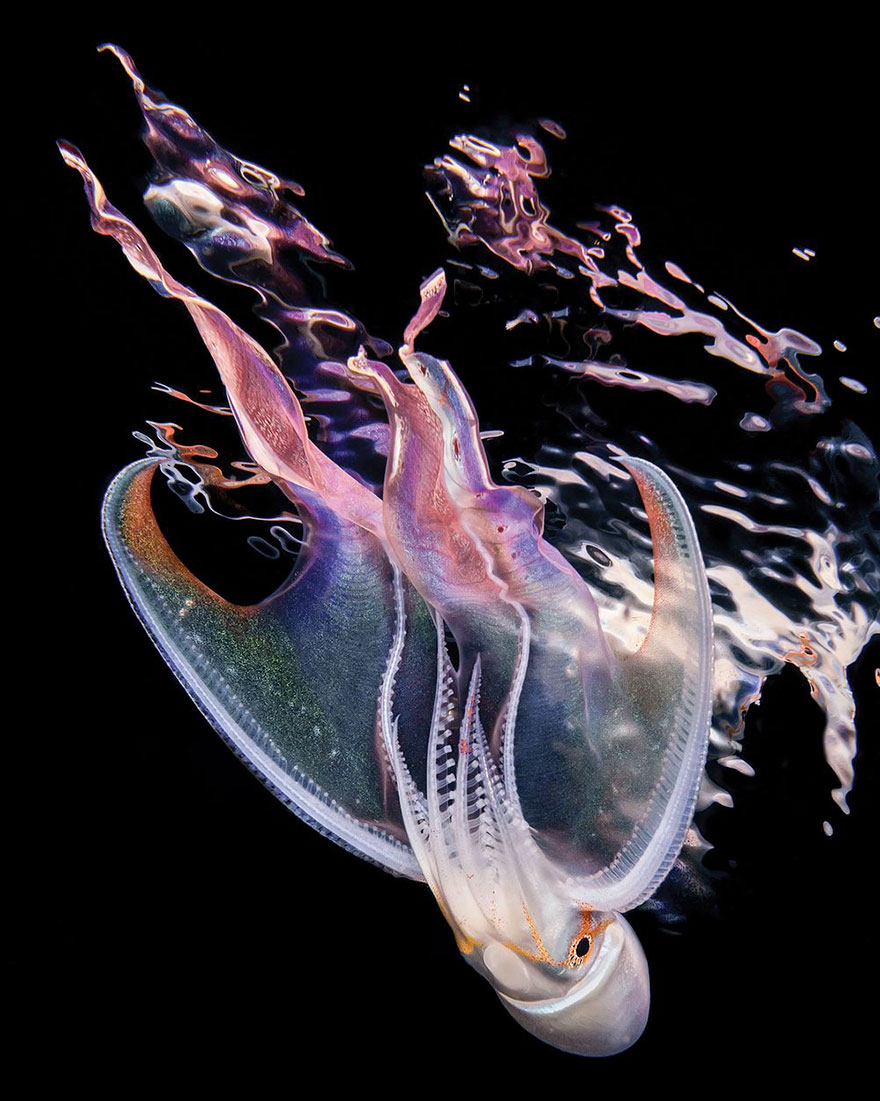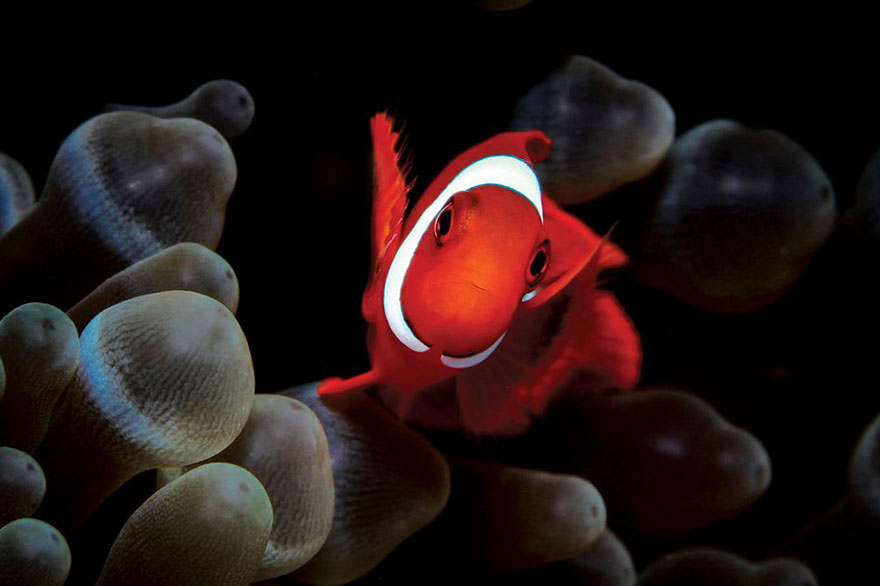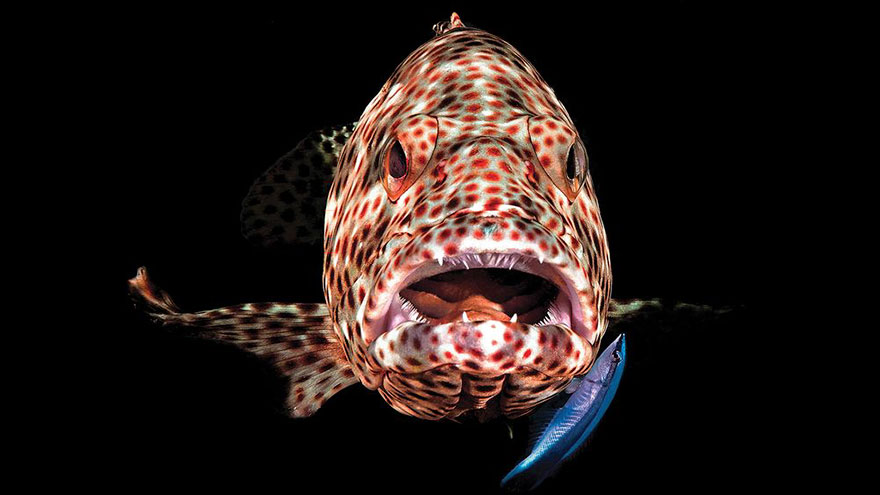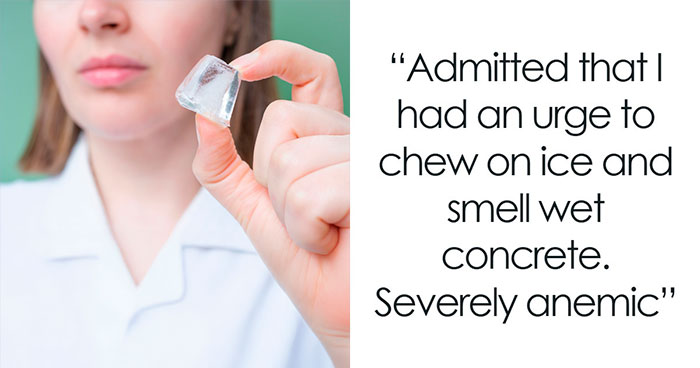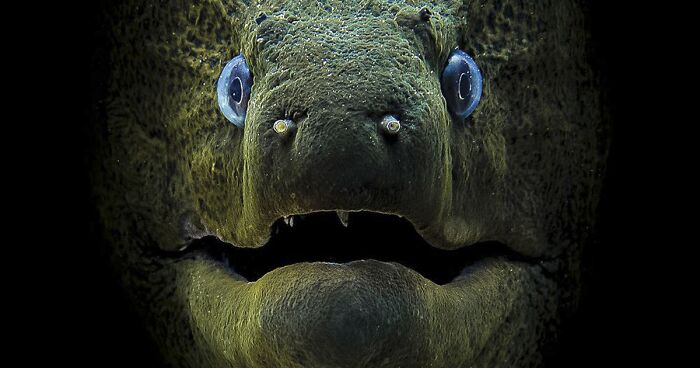
Scuba Diving Magazine’s 2018 Underwater Photo Contest Winners Will Take Your Breath Away
Back in summer, we all awed at the beautiful shots from Underwater Photography Of The Year winners, with stunning sea creatures interacting with the lens, as well as the serenity of water creating a calming atmosphere. Recently, Scuba Diving Magazine announced their own winners for Underwater Photo Contest and the best photos are just as breathtaking as the ones we've seen before.
The entries were divided into 4 categories (compact camera, wide-angle, conceptual, and macro) and 3 winners were chosen for each. Above all, of course, the judges picked the Grand Prize winner, Rodney Bursiel, who received a prize of $1,000 cash and a liveaboard trip aboard Oman Aggressor. All the other winners shared the rest of a prize pool, which varied from smaller cash prizes to trips aboard various vessels, a fitting reward in an underwater photography contest.
Scroll down below to see the stunning pictures and don't forget to comment and vote for your favorites. Oh, and if you take underwater pictures, professionally or as an amateur, yourself, you can submit your entry for their 2019 contest! You can submit your beautiful photos from November 1st, 2018 to May 31st, 2019.
More info: Scuba Diving Magazine
Underwater Photo Contest
This post may include affiliate links.
Grand Prize Winner, Rodney Bursiel, Tonga
Behind the Shot: After spending an entire day searching for whales, our boat was gifted with a magical encounter with a curious and interactive mother and calf. As the mother hovered at 30 feet, her inquisitive calf would make its way to the surface to breathe, coming in close to inspect each of us. Some of my favorite photos of marine life are shot from behind; here I attempted to create a unique perspective by flipping the image upside down so the whale appears to be floating just above the surface in full breach. Storytelling isn’t always about the reality of what was seen — I hope the image shares with others my take on the mystical world I find myself in each time I dip below the surface.
Absolutely stunning, Rodney. Congratulations! Your photos are breathtaking.
I actually thought it was that big flying creature from the Jurassic Park.
Wide-Angle Second Place, Karen Smith, Tulum, Mexico
Behind the Shot: Near Tulum lie numerous underwater cave systems known as cenotes. The Pit is the deepest of these and is sought out by divers because of its beautiful rock formations and filtered light. Our dive started with the sun directly above. We descended into a hydrogen sulfide layer of decomposing trees at 100 feet, which can be seen below, and then up through a shallow halocline. As I ascended, I noticed freedivers practicing; within 15 seconds and three shots, the two lined up perfectly.
I think it's a hand or part of the equipment but LMAO
Load More Replies...Compact Camera First Place, Jamie Hall, Tiran Island, Red Sea
Behind the Shot: At a dive site called South Lagoon, I noticed a rock-and-coral formation in a sandy area. As I peered into a hole in the middle, I saw one of the largest and most curious giant moray eels (Gymnothorax javanicus) I had ever come across. I moved in cautiously; as I did, the moray stared straight into my lens, not breaking contact for a moment. I was anxious not to stress the animal, so I took time to slowly draw closer. I clicked a few shots as the eel continued to stare and was over the moon when I viewed the image.
Conceptual Second Place, Lucie Drlikova, Prague, Czech Republic
Behind the Shot: This was photographed in Prague in a 26-foot-deep swimming pool covered by a very big piece of gray fabric. The image is titled “What Matters Most Is How You See Yourself.” It does not matter what other people think; most important is what you think, how you see yourself. I used the water’s surface as a mirror for the reflection, and turned the image by 90 degrees to create the effect of a woman in front of a mirror.
Wide-Angle First Place, Alex Dawson, Tala Bay, Jordan
Behind the Shot: In 1999, the Jordanian Royal Ecological Society sank an M42 Duster anti-aircraft tank close to shore just north of Tala Bay, a perfect snorkel and dive attraction. The wreck became home to many inhabitants of the reef shortly after its sinking — maximum depth at high tide is only 20 feet. I always work with off-camera lighting because I think it gives a better depth to images than using on-camera strobes.
Macro First Place, Cai Songda, Janao Bay, Anilao, Philippines
Behind the Shot: This shot reminds me how a seemingly boring night dive became one of my most memorable ones. Ascending from nearly 100 feet with nothing to show, I was doing my safety stop when I spotted this blanket octopus. At the time, it amazed me that all the necessary elements for a wonderful shot seemed to come together: Colors were vibrant, the reflections alluring, and the octopus very cooperative, as if striking a pose.
Macro Third Place, Rafael Fernandez Caballero, La Herradura, Spain
Behind the Shot: Due to its tiny size and shy nature, photographing a clingfish is complicated. After finding a clingfish with eggs, I waited for weeks until I could see the eyes inside — being careful not to wait too long. When the time was right, I took my best macro lens and greatest-magnification wet lens, and tried to capture the essence of a mother taking care of her descendants.
Macro Second Place, Christian Bachmann, Bunaken, Indonesia
Behind the Shot: The area around Bunaken Island, off North Sulawesi, Indonesia, is famous for its spectacular wall dives. It was at the end of one of these dives, on a deco stop, that I discovered this maroon clownfish. With its fins fluttering at a rapid pace, initially it was difficult for me to get my camera to focus, especially on the fine details. With patience and a little luck, I was able to get this shot, showing its distinctive gleaming white bar, and giving the impression that the fish is actually flying.
Compact Camera Second Place, Yap Katumbal, Lembeh Strait, Indonesia
Behind the Shot: I was diving at a site called TK3 in Lembeh Strait when I spotted this beautiful juvenile coconut octopus at around 40 feet — the tiniest coconut octopus I had ever seen, about 2 inches long. It was hiding in a glass tube that was lying on the bottom, and it looked like it was just waiting to be photographed. I decided to use my dive light in combination with an 8+ macro lens. I put the light on the right side of the tube, and the effect was great, with only the baby octopus and the tube in focus.
Compact Camera Third Place, Ferenc Lőrincz, Marsa Shagra, Egypt
Behind the Shot: This grouper was waiting with its mouth open for the cleaner fish at a cleaning station. I lit the fish from both sides with my flashes, allowing only a little bit of light in the back to create a black background.
Wide-Angle Third Place, Tom St. George, Tulum, Mexico
Behind the Shot: Occasionally, following heavy rainfall, tannic runoff stained by decaying leaf litter enters Cenote Carwash, turning it a vibrant reddish-orange. This tannic water blocks much of the daylight, and the cenote becomes darker than normal — it feels a bit like diving on Mars. Shot with ambient light only, this image required pushing the camera quite hard — shooting almost wide open, dragging the shutter, and pushing the ISO to 6400. The low-light settings also help accentuate the beam from the diver’s torch.
Conceptual Third Place, Christian Vizl, Quintana Roo, Mexico
Behind the Shot: The model is a champion freediver from Chile; the way she moves underwater is mesmerizing. This image was taken at midday, when the sun rays at the Pit cenote are best. There were many challenges — the first was to get the angle of the rays to create the illusion of entering a magical world. Then the model had to approach the surface very slowly (and I had to hold my breath) so we did not disturb the mirror effect. I used a relatively high shutter speed to capture the fine details of the rays.
Conceptual First Place, Conor Culver, Beangabang, Indonesia, And Naples, Florida
Behind the Shot: I came across this coconut octopus while muck diving; the creature perfectly posed, turning deep red and wrapping its tentacles up symmetrically. Ultimately I would create a “home” for it with a small bottle I found diving the USS Baja California off Naples, Florida, to reference how these creatures are often seen: in our disregarded trash.
Fantastic! At first I thought it's just a painting, that it's not real.
When exploring the world of underwater photography, the breathtaking sights captured in photo contests can be both inspiring and thought-provoking. These images showcase the incredible diversity beneath the ocean's surface.
One photographer's lens in Indonesia has revealed astonishing aquatic life in vivid detail, painting a picture of the hidden wonders that await every daring explorer.
Guys, if you find it hard to focus on your homework, the following tips will surely help............ HERE► www.jobsthings.com
Guys, if you find it hard to focus on your homework, the following tips will surely help............ HERE► www.jobsthings.com

 Dark Mode
Dark Mode 

 No fees, cancel anytime
No fees, cancel anytime 












